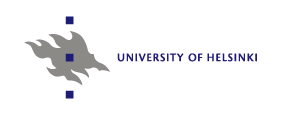- FIN-CLARIAH Research Infrastructure
A new national research infrastructure initiative FIN-CLARIAH for...
8.12.2021 8:12 by eahyvone - WarMemoirSampo published on December 3, 2021
A new “Sampo” application, “WarMemoirSampo”...
8.12.2021 8:04 by eahyvone - Five new SeCo papers accepted for the ISWC 2021
The 20th International Semantic Web Conference (ISWC 2021), the...
2.8.2021 6:53 by eahyvone
- Annastiina Ahola, Lilli Peura, Rafael Leal, Heikki Rantala and Eero Hyvönen: Using generative AI and LLMs to enrich art collection metadata for searching, browsing, and studying art history in Digital Humanities
- Eero Hyvönen, Petri Leskinen, Alexandre Lionnet, Blandine Blukacz-Louisfert, Pierre-Etienne Bourneuf, Davide Rodogno, Grégoire Mallard, and Florian Cafiero: Linked Open Data Approach to Study the Assembly Minutes of International Organizations and Their Underlying Prosopography in the Real World Context
- Eero Hyvönen, Petri Leskinen, Alexandre Lionnet, Blandine Blukacz-Louisfert, Pierre-Etienne Bourneuf, Davide Rodogno, Grégoire Mallard, and Florian Cafiero: A Linked Open Data Infrastructure for Studying Historical Activities of International Organizations: First Results on the League of Nations (1920-1946)
- Petri Leskinen, Eero Hyvönen, Alexandre Lionnet, Blandine Blukacz-Louisfert, Pierre-Etienne Bourneuf, Davide Rodogno, Grégoire Mallard, and Florian Cafiero: A Linked Open Data Service and Semantic Portal to Study the Assembly Minutes and Prosopography of the League of Nations (1920–1946)
 |
From Reassembling the Republic of Letters to LetterSampo - Letters on the Semantic Web |
Background - Republic of Letters on the Semantic Web
SeCo participated in the Digital Humanities EU COST action Reassembling the Republic of Letters 1500-1800, 2014-2018, led by prof. Howard Hotson (University of Oxford) and Dr. Thomas Wallnig (Universität Wien). Eero Hyvönen (Aalto University and University of Helsinki (HELDIG)) led the Work Group 2 People and Networks in the initiative involving over 30 countries. Related to this topic, there was also the project Cultures of Knowledge, phase III (2015-2017), at Oxford where SeCo collaborated with the Oxford and Stanford Universities with the goal of designing a Linked (Open) Data infrastructure, linked data service, and tooling for the underlying humanist scholarly community, based on the data harvested in the Early Modern Letters Online (EMLO) database and web service.
LetterSampo - Historical Letters on the Semantic Web
Inspired by the international collaborations on the Republic of Letters and by the work on developing the Bio CRM data model for biographical and prosopographical data in various Sampo portals, the SeCo group moved on to designing and implementing
- a general framework "LetterSampo", based on the "Sampo" model and "Sampo-UI" framework, for publishing and using epistolary data on the semantic web and
- a semantic portal demonstrator "LetterSampo - Historical Letters on the Semantic Web" that supports Digital Humanities research on letter correspondences.
The idea and its implementation, described in (Hyvönen et al., 2023), is that the general LetterSampo framework could be applied easily to create instances of epistolary portals by changing the underlying data and with a little adaptation in the user interface. In this approach the idea is not to create different UIs to accommodate differently represented datasets but rather to transform datasets into a harmonized "standardized" form, so that the same UI solutions and data-analysis tools can be re-used for different datasets. The goal of using a "standard" datamodel for representing epistolary data makes it possible to aggregate data from different local data silos into more global services, which is important, as letter data is typically available in geographically distributed repositories depending on where the letters were sent to.
To demonstrate and test the LetterSampo framework, it was applied to three international datasets: the CKCC corpus of the Huygens Institute in the Netherlands, correspSearch dataset aggregated by the Berlin-Brandenburg Academy of Sciences, and Early Modern Letters Online database of the Oxford University. The framework is also being used in the CoCo project on Finnish correspondences in the Grand Duchy of Finland in the 19th century.We welcome collaborations with researchers in humanities regarding epistolary data, and have started to collaborate with the network scientists prof. Mikko Kivelä and Javier Urena Carrion of Aalto University, with the goal of applying temporal network analysis tooling in epistolary data.
For a presentation and demonstration of the "LetterSampo - Historical Letters on the Semantic Web" system, see the video below:
From Republic of Letters 1500-1800 to LetterSampo from SeCo Research Group on Vimeo.
LetterSampo Demonstrator and Datasets Online
The online demonstrator "LetterSampo - Historical Letter on the Semantic Web" is available at:
https://lettersampo.demo.seco.cs.aalto.fi
based of the aggregated data of the CKCC and correspSearch datasets. We also published these datasets as linked open data at the Linked Data Finland platform, including SPARQL endpoints CKCC and correspSearch, and data dumps at Zenodo.org (CKCC dump and correspSearch dump).
Contact Persons
Prof. Eero Hyvönen, Aalto University and University of Helsinki, Helsinki Centre for Digital Humanities (HELDIG)
Doctoral candidate Petri Leskinen, Aalto University and University of Helsinki, Helsinki Centre for Digital Humanities (HELDIG)
Dr. Jouni Tuominen, Aalto University and University of Helsinki, Helsinki Centre for Digital Humanities (HELDIG)


